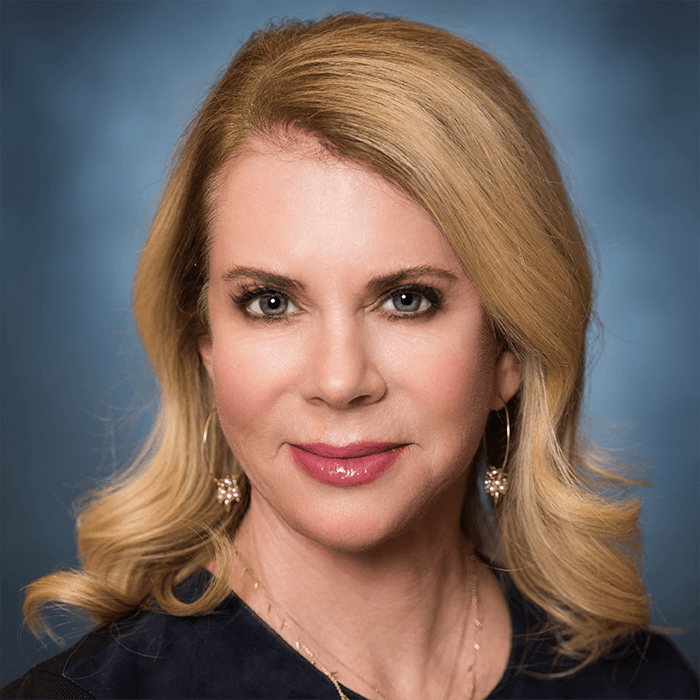
Ophthalmology is not limited to the clinic – and our latest ARVO member in the limelight, Adrienne Graves, is a perfect example. Having moved from clinical and laboratory work to the helm of multiple organizations driving innovation in ophthalmology, Graves outlines key lessons learned and how ARVO helped her along the way.
What are your current positions?
I’m the Chairman of the Board at Iveric Bio and a board member for six additional companies: Nicox, Oxurion, Surface Ophthalmics, Qlaris, TherOptix, and Greenbrook TMS. I am also a board member for five ophthalmology foundations: Foundation Fighting Blindness and its venture arm the Retinal Degeneration Fund (RD Fund), Glaucoma Research Foundation, ASCRS, the Himalayan Cataract Project, and Retina Global. I am a former CEO of Santen.
What do your roles involve?
My corporate board roles have me fully immersed in ophthalmology innovation – a passion of mine. I closely follow scientific and industrial progress in retina, glaucoma, external disease, drug delivery, artificial intelligence, and telemedicine. All of this allows me to provide strategic input, advance programs, and help the businesses grow. In my foundation and nonprofit work, I see myself as a patient advocate, fundraiser, and innovator focused on patient needs.
What is your relationship with ARVO?
My first ARVO meeting was in the late 1970s, after I graduated from college (with a senior thesis in visual psychophysics), but before I started graduate school. ARVO was on Lido Key (an island off the coast of Sarasota, Florida). I attended the psychophysics and electrophysiology sessions, which were right across the hall from each other on the top floor of the Holiday Inn. ARVO reinforced my fascination with studying the visual system and my desire to continue on to graduate studies in visual neuroscience. Thanks to ARVO, I met scientists and ophthalmologists who became mentors and dear friends. I’ve been actively involved with ARVO since those early days – having chaired and served on committees (including Commercial Relations and Gender Diversity), presented posters and papers, led several “Breakfast with an Expert” sessions, delivered the first annual WEAVR Lecture, and consistently attended annual meetings. In fact, when I applied for my first industry job, one of my bold “demands” was that I had to attend ARVO every year (which was met with a laugh and “of course we’d want you to!” from Alcon)!
What are your current projects?
Although I haven’t done bench science in many years, I remain passionate about advances in vision research – particularly the incredible advances in retinal technologies and therapies. I’m excited to now serve as the Board Chair of the Retinal Degeneration (RD) Fund, the venture arm of Foundation Fighting Blindness (FFB). The RD Fund makes mission related investments that aim to bring clinical and financial returns that further the Foundation’s mission to bring about treatments and cures for inherited retinal diseases. The Fund is unique in that it brings to bear the Foundation’s extensive resources: including a patient registry, clinical consortium of over 40 leading international eye centers, and scientific expertise to make strategic investments into early-stage companies with innovative therapies for inherited retinal disorders (IRDs). Having the opportunity to look at a myriad of startup companies with brilliant science, often funded by the Foundation’s granting strategies, is thrilling. The RD Fund has already enjoyed a return on investment, with several portfolio company exits. These company acquisitions from leading strategics and private equity firms validate our model to catalyze retinal therapeutic R&D while providing additional sources of capital to the Foundation and the Fund to further its mission. Since the approval of Luxturna, the eye, being accessible and with some measure of immune privilege, continues to be a proving ground for novel technologies including genetic medicines. It’s no longer a field with more capital than science projects; the science is now outpacing the capital needed to fund these promising treatments.
I’m also excited about the current projects in retina, glaucoma, and external disease at companies where I serve on the board. Iveric Bio is currently developing therapeutic product candidates for age-related retinal diseases and gene therapy product candidates for orphan IRDs. Particularly exciting right now is Zimura, a complement (C5) inhibitor for the treatment of geographic atrophy secondary to dry AMD. Qlaris Bio is focused on glaucoma; the lead program involves a novel compound that targets episcleral venous pressure, a currently unaddressed component of IOP. In addition to its potential use in POAG or OHT, it may provide a new and unique treatment in Sturge-Weber Syndrome, a rare disease. Surface Ophthalmics has recently completed a phase II study with its lead program in dry eye disease – SURF-100. This is the first-ever head-to-head study in chronic dry eye that compares the study drug against two leading market competitors, both lifitegrast ophthalmic solution, and cyclosporine ophthalmic emulsion. The lead study formulation exhibited clinically significant efficacy for signs and symptoms of dry eye disease, as early as seven days after initiation of therapy. The dry eye market is enormous and growing and, because there is widespread patient dissatisfaction with current products, this groundbreaking study design could provide very interesting treatment insights.
What was your first ARVO work?
My first ARVO work was a poster presentation at the 1978 meeting titled “Development of ERG Signals in Light Adaptation.” I was working as a lab assistant and clinical ERG technician for Anne Fulton at Harvard Medical School and Children’s Hospital the year before I started graduate school. It’s astonishing to see the technological and therapeutic advances in retina since my early days in the field.
What influence has ARVO had in your career?
ARVO has been a tremendous force in my career that continually renews and reinforces my passion for ophthalmology and visual science. ARVO has led to not only friendships, but also lasting personal and professional relationships. I am always inspired at ARVO meetings when I see the incredible dedication of scientists, their discoveries, and advances in our understanding of the pathophysiology and treatment of ophthalmic disorders.
What has been your biggest career challenge?
As everyone in the pharmaceutical or biotech space knows, a multitude of things can go wrong when taking a compound from preclinical studies to an approved and successfully marketed product. I’ve experienced disappointing clinical results, manufacturing issues, unexpected adverse events, formulation issues, and many other bumps in the road. Although these challenges can be maddening, they also keep drug development and commercial activities exciting (well, most of the time)! The process of building a talented, highly functional, and successful team is particularly rewarding and exhilarating. Going through difficulties with an engaged team can actually build an incredible “esprit de corps,” even when the outcome is not what you had in mind.
What research – and researchers – were important to you early in your career?
I was captivated and intrigued by Hubel and Wiesel’s early research on the effects of visual deprivation on the development of the visual system (for which they later won a Nobel Prize). It shaped my doctoral research on an animal model for anisometropic amblyopia and visual development consequences.
My doctoral advisor, Daniel G. Green, was a tremendous inspiration and support. During my first year in graduate school, I loved working with him on his retinal electrophysiology studies. Then, he sat me down and told me that those studies were his passion, but he wanted me to find mine. That was scary at the time, but it changed the course of my research and contributed to a lifelong dedication.
Who inspires you today?
Jean Bennett is a tremendous inspiration. Bennett is, as most in our field know, the inventor and co-developer of Luxturna, the first FDA-approved gene therapy for a genetic disease. In reaching that milestone, she displayed incredible desire and a dogged determination to overcome numerous hurdles over many years – all to help people with a rare, but devastating, retinal disease. As the scientific co-founder of the recently formed Opus Genetics, she is driven to investigate additional gene therapies for underserved orphan blinding retinal disorders. Because FFB and the RD Fund leadership conceived Opus Genetics with Bennett, providing industry and business expertise, I feel fortunate to have been a small part of supporting its start.
What advice do you have for those following in your footsteps?
Be open to possibilities you haven’t considered. Thinking that there is only one path for you may lead you to miss out on wonderful opportunities. Potential roles in industry for scientists and clinicians have grown and expanded tremendously in recent years. There are
roles in which you can still practice bench science or see patients, and there are a variety of roles in which you can learn new skills – even in new fields – and your impact can be far- reaching.
If you weren’t a scientist or an executive, what would you be doing?
I was a curious kid and loved every subject in school. I think that’s why science appealed to me – it’s all about asking questions, exploring, and continual learning. Another career path I always dreamed about was broadcast journalism. I thought it would be exciting because it also involves continual learning. Other kids hated oral book reports and assigned debates, but I loved being “on stage!”
Do you have a favorite hobby or pastime?
I love to travel; my favorite destinations are Paris and anywhere in Italy. I’m always reading two or three books at any time and I love hiking. Apart from all that, I enjoy sharing good food and wine with friends and family, and keeping up with ophthalmology friends!

